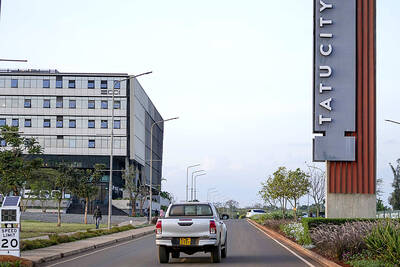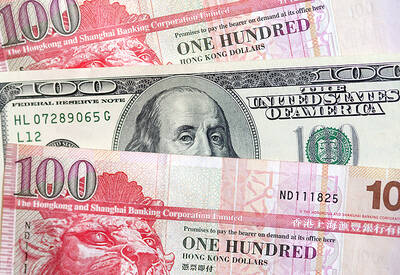With China’s massive construction sector still in a funk and the US and Europe likely heading into recessions, India has emerged as a savior for flagging global steel demand.
Poised to overtake China as the world’s most populous nation next year, India is in the midst of a building boom. Indian Prime Minister Narendra Modi is seeking to modernize roads, rail networks and ports in attempt to vie with China as a manufacturing hub.
That is set to translate into a 6.7 percent jump in steel demand to about 120 million tonnes next year, according to the World Steel Association, the highest growth among major economies.
India, which also saw a similar expansion this year, overtook the US to become the world’s No. 2 steel consumer after China a couple of years ago.
“The nation-building phase of any economy requires a lot of steel and commodities,” said Jayant Acharya, deputy managing director at JSW Steel Ltd, the nation’s biggest producer.
India is going through that phase this decade and it could boost the nation’s steel consumption to more than 200 million tonnes by 2030, he said.
The buoyant outlook has set off a flurry of activity. ArcelorMittal Nippon Steel India Ltd, a joint venture between India’s Mittal family and the Japanese producer, has plans to more than triple capacity to 30 million tonnes in the next decade. South Korean steelmaker POSCO Holdings Inc and Indian tycoon Gautam Adani, Asia’s richest person, are also exploring setting up mills in the nation.
India produces the vast majority of the steel it uses, but it is also being forced to import more to meet the surge in demand. Inward shipments rose 15 percent from April to October from a year earlier to 3.1 million tonnes, government data showed.
Local producers are becoming worried about the flood of cheap imports as demand dries up in traditional steel producers. China accounted for more than one-quarter of imports in October, while some Russian steel is also reaching India, the data showed.
The quality of some of the steel coming in is “substandard,” said A.K. Hazra, deputy secretary-general at the Indian Steel Association, which has requested authorities look into the matter.
“We are just asking that imports should be at competitive and international prices, and the quality should adhere to Indian standards,” he said.
Despite the strong growth, India is still well behind China in terms of total steel consumption. Demand for next year would be less than one-seventh of China’s 914 million tonnes, World Steel Association data showed.
How fast India can narrow the gap would depend on the success of Modi’s construction rollout, with the Indian Ministry of Finance estimating US$1.4 trillion of funding would be needed through 2025.
China’s real-estate problems and the lingering impact of COVID-19 would keep its steel demand suppressed next year, said Jayanta Roy, senior vice president at ICRA Ltd, the Indian unit of Moody’s Investors Service.
“Over the long term, it would depend on the recovery of the property sector on the one hand, and the government’s policy of an infrastructure-led economic growth model in China,” he said.

To many, Tatu City on the outskirts of Nairobi looks like a success. The first city entirely built by a private company to be operational in east Africa, with about 25,000 people living and working there, it accounts for about two-thirds of all foreign investment in Kenya. Its low-tax status has attracted more than 100 businesses including Heineken, coffee brand Dormans, and the biggest call-center and cold-chain transport firms in the region. However, to some local politicians, Tatu City has looked more like a target for extortion. A parade of governors have demanded land worth millions of dollars in exchange

Hong Kong authorities ramped up sales of the local dollar as the greenback’s slide threatened the foreign-exchange peg. The Hong Kong Monetary Authority (HKMA) sold a record HK$60.5 billion (US$7.8 billion) of the city’s currency, according to an alert sent on its Bloomberg page yesterday in Asia, after it tested the upper end of its trading band. That added to the HK$56.1 billion of sales versus the greenback since Friday. The rapid intervention signals efforts from the city’s authorities to limit the local currency’s moves within its HK$7.75 to HK$7.85 per US dollar trading band. Heavy sales of the local dollar by

Taiwan Semiconductor Manufacturing Co’s (TSMC, 台積電) revenue jumped 48 percent last month, underscoring how electronics firms scrambled to acquire essential components before global tariffs took effect. The main chipmaker for Apple Inc and Nvidia Corp reported monthly sales of NT$349.6 billion (US$11.6 billion). That compares with the average analysts’ estimate for a 38 percent rise in second-quarter revenue. US President Donald Trump’s trade war is prompting economists to retool GDP forecasts worldwide, casting doubt over the outlook for everything from iPhone demand to computing and datacenter construction. However, TSMC — a barometer for global tech spending given its central role in the

An Indonesian animated movie is smashing regional box office records and could be set for wider success as it prepares to open beyond the Southeast Asian archipelago’s silver screens. Jumbo — a film based on the adventures of main character, Don, a large orphaned Indonesian boy facing bullying at school — last month became the highest-grossing Southeast Asian animated film, raking in more than US$8 million. Released at the end of March to coincide with the Eid holidays after the Islamic fasting month of Ramadan, the movie has hit 8 million ticket sales, the third-highest in Indonesian cinema history, Film